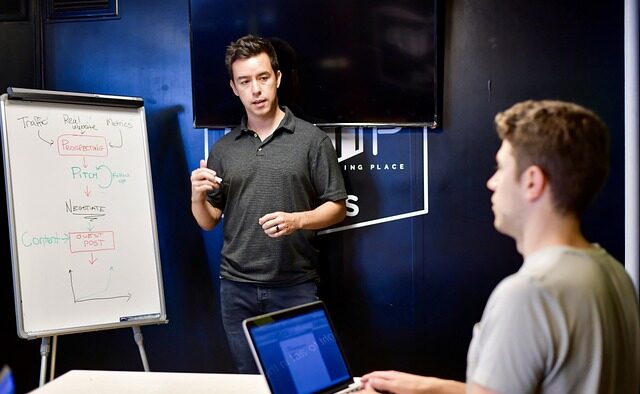20 Ways to Cultivate a Robust Cybersecurity Culture
Share

In today’s hyper-connected world, digital defense isn’t just an IT department concern – it’s a collective responsibility. Cultivating a strong cybersecurity culture within your organization isn’t just about firewalls and antivirus software; it’s about fostering a shared mindset of awareness, vigilance, and proactivity. Here are 10 powerful ways to build a defense against cyber threats, brick by brick.
- Leadership Sets the Tone: From Ivory Tower to Security Champion Leaders aren’t just figureheads; they’re culture architects. Executive buy-in is crucial: when top brass prioritize cybersecurity, it sends a resounding message that security is everyone’s business. Encourage leaders to become vocal advocates, actively participating in training and awareness campaigns. This sets the right tone and empowers employees to champion security themselves.
- Knowledge is Power: Equip Your Workforce with Cybersecurity LiteracyImagine facing an enemy you don’t even recognize. That’s the peril of cyber threats for the uninformed. Invest in comprehensive cybersecurity training that goes beyond technical jargon. Make it engaging, relevant, and role-specific. Emphasize real-world scenarios, phishing simulations, and practical tips for everyday situations. Remember, regular refreshers are key to keeping knowledge fresh and habits sharp.
- Communication is Key: Foster Open Dialog and Reporting Fear of punishment shouldn’t silence security concerns. Create a culture of open communication, where employees feel empowered to report suspicious activity without fear of retribution. Establish clear reporting channels, anonymous reporting options if needed, and celebrate responsible reporting. Remember, early detection is crucial in mitigating cyberattacks.
- Make Security Convenient, Not Cumbersome Let’s face it, nobody enjoys cumbersome security measures. Streamline security protocols to be as frictionless and user-friendly as possible. Consider password managers, single sign-on solutions, and automated security updates to reduce human error and simplify secure practices.
- Gamify Learning and Reward Positive Behavior Turn cybersecurity awareness into a fun and engaging experience. Introduce gamified training modules, leaderboards, and recognition programs for employees who demonstrate safe practices. Encourage friendly competition and reward positive security behavior to make security a desirable outcome.
- Foster a Culture of Continuous Learning The cyber threat landscape is constantly evolving. Make continuous learning a core value. Encourage employees to attend industry events, webinars, and workshops to stay updated on the latest threats and best practices. Promote knowledge sharing within teams and celebrate individual initiatives that contribute to collective security.
- Celebrate Success Stories, Not Just Horror Shows Cybersecurity awareness often focuses on scare tactics and negative consequences. While raising awareness of threats is important, don’t forget to celebrate successes. Showcase instances where employees identified and reported suspicious activity, preventing potential breaches. This reinforces the positive impact of secure practices and motivates continued vigilance.
- Measure and Adapt: Track Progress and Refine Your Strategy Building a strong cybersecurity culture is an ongoing journey. Regularly measure the effectiveness of your initiatives through surveys, phishing tests, and security incident reports. Use this data to identify areas for improvement and adapt your strategy accordingly. Remember, continuous evaluation and adaptation are key to staying ahead of cyber threats.
- Accept Diversity of Perspectives A diverse workforce brings a wealth of perspectives and experiences to the table. Leverage this diversity by encouraging open discussions and collaborative problem-solving on cybersecurity issues. Encourage employees from different departments and backgrounds to share their concerns and insights. This will lead to a more comprehensive and inclusive approach to security.
- Make Security Everyone’s Responsibility, Not Just IT’s Cybersecurity isn’t the sole domain of the IT department. It’s a shared responsibility that requires active participation from every employee. Empower individuals to take ownership of their own digital hygiene and make security-conscious decisions in their daily work. Remember, the weakest link in the chain can compromise the entire system.
Building a robust cybersecurity culture is an investment, not an expense. By implementing these 10 strategies, you can empower your employees, strengthen your defenses, and create a culture of resilience against the ever-evolving threats in the digital landscape. Remember, cybersecurity is not a destination, but a continuous journeyThe previous ten strategies provide a solid foundation for building a strong cybersecurity culture. However, your journey doesn’t end there. Here are some additional ways to go beyond the basics and further refine your approach.
- Tailor Training to Roles and Responsibilities One-size-fits-all training rarely delivers optimal results. Target training programs to specific roles and responsibilities within your organization. Finance personnel might need deep dives on financial fraud detection, while marketing teams might benefit from focused training on social media phishing scams. Tailored training ensures employees receive the most relevant and actionable information they need to stay secure.
- Leverage Technology for Security Awareness Technology can be a powerful ally in your cybersecurity awareness efforts. Utilize eLearning platforms, mobile apps, and microlearning tools to deliver bite-sized security lessons and reminders throughout the day. Consider gamified simulations and interactive modules to keep employees engaged and reinforce key security concepts.
- Partner with Experts Don’t hesitate to seek external expertise when needed. Engage cybersecurity training providers, penetration testers, and ethical hackers to conduct vulnerability assessments and provide specialized training. Their insights and expertise can help you identify blind spots and strengthen your defenses against sophisticated threats.
- Celebrate Security Champions Identify and recognize individuals who embody your security culture values. Feature them in internal newsletters, award programs, or even company-wide town halls. This public recognition motivates others to follow their example and reinforces the importance of security within your organization.
- Make Security Visible in the Workplace Integrate security awareness into your physical environment and everyday interactions. Display posters with security tips, hold “phishing-free lunch” days, or host internal competitions to identify and report suspicious emails. These subtle reminders keep security top-of-mind and encourage active participation from everyone.
- Address Cultural Barriers Recognize that cultural differences can sometimes affect how individuals perceive and prioritize security. Conduct cultural sensitivity training for your security team and encourage them to approach communication and training with empathy and understanding. Tailor messaging and delivery methods to resonate with diverse audiences within your organization.
- Measure Risk Appetite and Adapt Accordingly Every organization has a unique risk tolerance. Assess your risk appetite and tailor your cybersecurity culture accordingly. High-risk industries might require more stringent protocols and training, while others might prioritize user convenience with appropriate risk mitigation strategies.
- Conduct Regular Phishing Tests Don’t just train; test your training! Regular phishing simulations help identify areas where employees are vulnerable and provide valuable data for refining your training programs. Remember, the goal is to educate, not punish, so frame these tests as learning opportunities and offer constructive feedback to those who fall victim.
- Promote a Security-Minded Mindset Shift the focus from “don’ts” to “dos.” Instead of constantly telling employees what not to do, empower them with positive security practices and behaviors. Encourage a culture of curiosity, questioning, and critical thinking when it comes to cybersecurity. This fosters a proactive approach and empowers individuals to make informed security decisions.
- Remember, Culture Takes Time Building a strong cybersecurity culture is a marathon, not a sprint. Be patient, persistent, and consistent in your efforts. Track progress, celebrate milestones, and continuously adapt your strategies to evolve with the changing threat landscape. Remember, a dedicated effort from everyone can create a truly resilient and secure digital environment.
A Final Note
Foster a culture of security across all levels of your organization. Encourage employees to actively participate in spreading awareness, reporting suspicious activity, and holding each other accountable for secure practices. This collective ownership creates a powerful network of cybersecurity advocates within your organization.
By implementing these additional strategies and tailoring them to your specific needs, you can elevate your cybersecurity culture to the next level, creating a robust digital defense that protects your organization from ever-evolving threats. Remember, your digital security is only as strong as your collective culture of vigilance and proactive defense.


